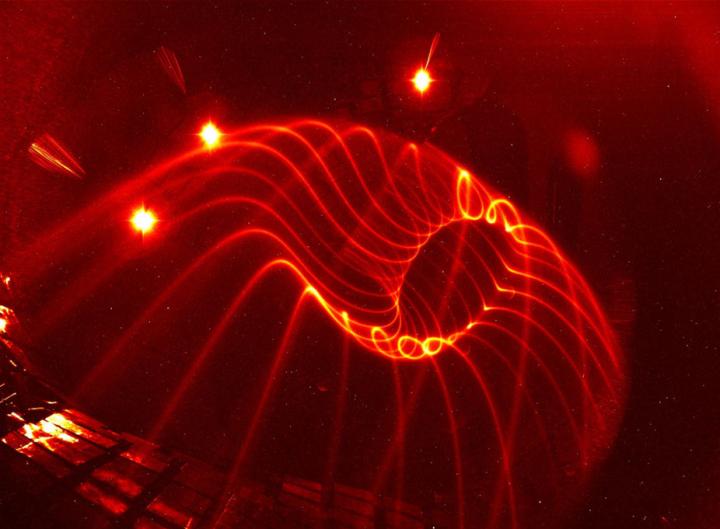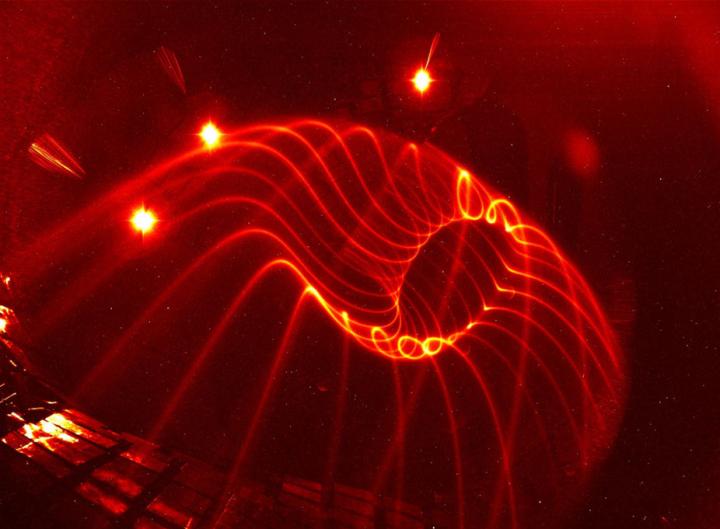
Credit: Nature Communications
Physicist Sam Lazerson of the U.S. Department of Energy's (DOE) Princeton Plasma Physics Laboratory (PPPL) has teamed with German scientists to confirm that the Wendelstein 7-X (W7-X) fusion energy device called a stellarator in Greifswald, Germany, produces high-quality magnetic fields that are consistent with their complex design.
The findings, published in the November 30 issue of Nature Communications, revealed an error field — or deviation from the designed configuration — of less than one part in 100,000. Such results could become a key step toward verifying the feasibility of stellarators as models for future fusion reactors.
W7-X, for which PPPL is the leading U.S. collaborator, is the largest and most sophisticated stellarator in the world. Built by the Max Planck Institute for Plasma Physics in Greifswald, it was completed in 2015 as the vanguard of the stellarator design. Other collaborators on the U.S. team include DOE's Oak Ridge and Los Alamos National Laboratories, along with Auburn University, the Massachusetts Institute of Technology, the University of Wisconsin-Madison and Xanthos Technologies.
Twisty magnetic fields
Stellarators confine the hot, charged gas, otherwise known as plasma, that fuels fusion reactions in twisty — or 3D — magnetic fields, compared with the symmetrical — or 2D –fields that the more widely used tokamaks create. The twisty configuration enables stellarators to control the plasma with no need for the current that tokamaks must induce in the gas to complete the magnetic field. Stellarator plasmas thus run little risk of disrupting, as can happen in tokamaks, causing the internal current to abruptly halt and fusion reactions to shut down.
PPPL has played key roles in the W7-X project. The Laboratory designed and delivered five barn door-sized trim coils that fine-tune the stellarator's magnetic fields and made their measurement possible. "We've confirmed that the magnetic cage that we've built works as designed," said Lazerson, who led roughly half the experiments that validated the configuration of the field. "This reflects U.S. contributions to W7-X," he added, "and highlights PPPL's ability to conduct international collaborations." Support for this work comes from Euratom and the DOE Office of Science.
To measure the magnetic field, the scientists launched an electron beam along the field lines. They next obtained a cross-section of the entire magnetic surface by using a fluorescent rod to intersect and sweep through the lines, thereby inducing fluorescent light in the shape of the surface.
Remarkable fidelity
Results showed a remarkable fidelity to the design of the highly complex magnetic field. "To our knowledge," the authors write of the discrepancy of less than one part in 100,000, "this is an unprecedented accuracy, both in terms of the as-built engineering of a fusion device, as well as in the measurement of magnetic topology."
The W7-X is the most recent version of the stellarator concept, which Lyman Spitzer, a Princeton University astrophysicist and founder of PPPL, originated during the 1950s. Stellarators mostly gave way to tokamaks a decade later, since the doughnut-shaped facilities are simpler to design and build and generally confine plasma better. But recent advances in plasma theory and computational power have led to renewed interest in stellarators.
Such advances caused the authors to wonder if devices like the W7-X can provide an answer to the question of whether stellarators are the right concept for fusion energy. Years of plasma physics research will be needed to find out, they conclude, and "that task has just started."
###
PPPL, on Princeton University's Forrestal Campus in Plainsboro, N.J., is devoted to creating new knowledge about the physics of plasmas — ultra-hot, charged gases — and to developing practical solutions for the creation of fusion energy. The Laboratory is managed by the University for the U.S. Department of Energy's Office of Science, which is the largest single supporter of basic research in the physical sciences in the United States, and is working to address some of the most pressing challenges of our time. For more information, please visit science.energy.gov.
Media Contact
John Greenwald
[email protected]
609-243-2672
@PPPLab
http://www.pppl.gov
############
Story Source: Materials provided by Scienmag





